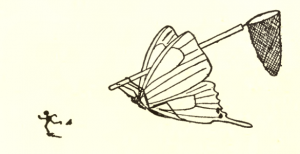
Title: Yeast CAF-1 assembles histone (H3-H4) 2 tetramers prior to DNA deposition
What Caught Our Attention: Informative retraction notices can be infrequent, but rarer still are notices that fulfill an oft-ignored function: To be a source of learning for others in the field. Here, the authors offer a nearly 800-word “detailed description of the issues” with “some observations that may be useful for investigators conducting similar studies.” These authors embraced the retraction process, carefully explaining their findings or the lack thereof, for each figure from their now-retracted paper.
Journal: Nucleic Acids Research
Authors: Duane D. Winkler, Hui Zhou, Mohd A. Dar, Zhiguo Zhang, and Karolin Luger
Affiliations: Colorado State University, CO, USA; Mayo Clinic, MN, USA
The authors of the above-cited paper request its retraction. A detailed description of the issues that have arisen with respect to that study are provided below, as well as some observations that may be useful for investigators conducting similar studies.
While conducting a follow-up study further detailing the mechanism of CAF-1 mediated histone deposition, we were unable to reproduce the stoichiometry measurements in Fig. 4b-d, and Fig. 5 in Winkler et al. These data originally led us to conclude that one CAF-1 molecule binds one (H3-H4)2 tetramer. We now realize that traditional stoichiometry plots are not ideal, as the determination of the inflection point relies quite heavily on a very small portion of the data. Using a number of complementary approaches (i.e. Job Plots, AUC, and SEC-MALS), we are now certain that one CAF-1 complex binds only ONE H3-H4. The correct stoichiometries have now been recently published by ourselves and one other group (1,2).
We wish to emphasize that the experimental data shown in Fig. 6 are still consistent with our current model that two CAF-1 molecules can bind to one (H3-H4)2 tetramer. The experiments were performed using yeast extracts, and PCNA was present in the pulldowns. Therefore, it is likely that more than one CAF-1 complex is associated with one (H3-H4)2 tetramer, giving rise to the results depicted in Fig. 6.
All authors of this manuscript agree with this request and the information provided in this document. We sincerely apologize for any inconvenience that this may have caused the scientific community.
Details of the original experimental data from Winkler et al. (2012):
Fig. 1 and Fig. 4a: Binding affinities of CAF-1 for H3-H4: The data from this figure are correct, and several of the affinities listed in Table 1 have been repeated in our lab and are published (1).
Fig. 2: Binding affinities of CAF-1 for acetylated H3-H4 and tailless H3-H4 (Kds also listed in Table 1). These have not been repeated, but from our experience with other histone chaperones and with CAF-1, we believe that these values would be reproducible.
Fig. 3: H3-H4 exists mostly as a dimer in solution, not as a tetramer: This has now been confirmed by other data in the lab using alternative approaches, and also by published work (3). The conclusion that H3-H4 exists mostly as a dimer under physiological salt conditions and at concentrations lower than 1 μM is now well established.
Fig. 4b-d: Stoichiometry of the CAF-1•H3-H4 complex: We and others were unable to reproduce this data, using a variety of approaches. Indeed, using Job Plots, AUC, and SEC-MALS, we concluded that CAF-1 only binds ONE H3-H4 dimer (1). A paper published by another group at the same time reached the same conclusion that CAF-1 bound one H3-H4, based on SEC- MALS, analytical ultracentrifugation (AUC) and native mass spectrometry (Figure 2 in (2)).
The last column in Table 1 is compromised. Columns 1–3 are correct.
Fig. 5: Analysis of the CAF-1•H3-H4 complex using SEC-MALS. We and others were unable to reproduce this result. In repeated experiments, we do NOT see a shift in SEC-MALS of CAF-1 upon addition of histones, as also reported by others (1,2,4). At this stage, we have no explanation for this regrettable discrepancy, apart from the fact that we now have vastly improved our CAF-1 preparations from what was used in 2011.
Fig. 6: Pulldown assay of CAF-1 with H3-H4. The data is consistent with our new interpretation that two CAF-1 molecules can bind to one (H3-H4)2 tetramer. The experiments were performed using yeast extracts, and PCNA was present in the pulldowns. Therefore, it is likely that more than one CAF-1 complex is associated with one (H3-H4)2 tetramer, giving rise to the results depicted in Fig. 6.
1. Mattiroli, F., Gu, Y., Yadav, T., Balsbaugh, J.L., Harris, M.R., Findlay, E.S., Liu, Y., Radebaugh, C.A., Stargell, L.A., Ahn, N.G. et al. (2017) DNA-mediated association of two histone-bound CAF-1 complexes drives tetrasome assembly in the wake of DNA replication. eLife, 6.2. Sauer, P.V., Timm, J., Liu, D., Sitbon, D., Boeri-Erba, E., Velours, C., Mucke, N., Langowski, J., Ochsenbein, F., Almouzni, G. et al. (2017) Insights into the molecular architecture and histone H3-H4 deposition mechanism of yeast Chromatin assembly factor 1. eLife, 6.
3. Donham, D.C., 2nd, Scorgie, J.K. and Churchill, M.E. (2011) The activity of the histone chaperone yeast Asf1 in the assembly and disassembly of histone H3/H4-DNA complexes. Nucleic acids research, 39, 5449–5458.
4. Liu, W.H., Roemer, S.C., Port, A.M. and Churchill, M.E. (2012) CAF-1-induced oligomerization of histones H3/H4 and mutually exclusive interactions with Asf1 guide H3/H4 transitions among histone chaperones and DNA. Nucleic Acids Res, 40, 11229–11239.
Date of Article: November 2012
Times Cited, according to Clarivate Analytics’ Web of Science: 44
Date of Notice: August 18, 2017
Like Retraction Watch? Consider making a tax-deductible contribution to support our growth. You can also follow us on Twitter, like us on Facebook, add us to your RSS reader, sign up on our homepage for an email every time there’s a new post, or subscribe to our daily digest. Click here to review our Comments Policy. For a sneak peek at what we’re working on, click here. If you have comments or feedback, you can reach us at [email protected].